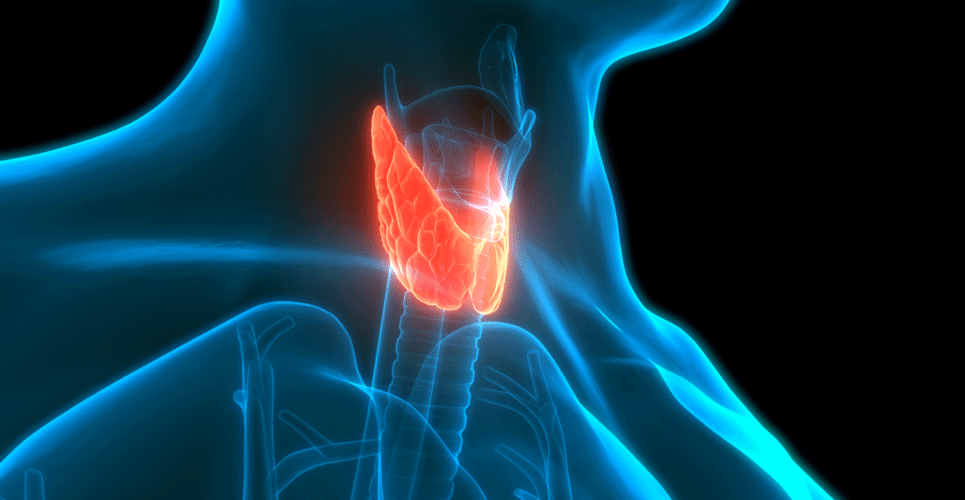Having thyroid cancer is linked to a higher risk of coronary heart disease and which persists in those under 65 years for at least 5 years
Individuals who have thyroid cancer (TC) are at a greater risk of developing coronary heart disease and among those under 65 years of age, this elevated risk persists for at least five years after their cancer diagnosis according to an observational study by Taiwanese researchers.
In 2020, the global estimated rate of thyroid cancer was 10·1 per 100 000 women and 3·1 per 100 000 men, although mortality rates were lower at 0·5 per 100 000 and 0·3 per 100 000 for women and men respectively. Surgery is the mainstay of treatment in nearly every case of thyroid cancer although radiotherapy can also be used. If the thyroid is removed, then patients will require life-long therapy with levothyroxine both to replace the hormone and lower the risk of cancer recurrence. However, long-term use of levothyroxine may cause marked impairment of cardiac functional reserve and physical exercise capacity. Whether these changes increase the subsequent risk of cardiovascular disease remains uncertain with some evidence that such patients have a higher incidence of cardiovascular disease morbidity. In contrast however, other work has shown that the incidence of cerebrovascular disease, cerebral infarction, ischaemic heart disease, ischaemic heart attack and heart failure are no different between those with TC and the general population.
With some uncertainty over the relationship between TC and the risk of cardiovascular diseases, in the current study, the Taiwanese researchers turned to data contained within a nationwide population-based cohort to retrospectively examine this relationship. They chose a baseline date for their analysis as the time when TC patients underwent a thyroidectomy but excluded those aged < 20 and > 85 years and anyone with a history of coronary heart disease (CHD) or atrial fibrillation. They set the primary endpoint of interest as hospitalisation for CHD defined in terms of fatal and non-fatal CHD. Secondary outcomes included ischaemic stroke (IS) that required hospitalisation and atrial fibrillation, which again required hospitalisation. The researchers calculated a standardised incidence ratio (SIR) as the ratio of observed to expected CHD cases, stratified by age and gender within the general population.
Thyroid cancer and risk of coronary heart disease
A total of 4,274 individuals who had thyroid cancer without CHD and a mean age of 49 years (24.4% male) were included in the analysis and followed-up for a mean of 3.5 years.
During follow-up, there were 69 CHD events in those with TC and the SIR was significantly higher than expected in the age-standardised population (SIR = 1.57, 95% CI 1.2 – 1.93). However, the rate of IS was not significantly different (SIR = 0.74, 95% CI 0.47 – 1), neither was the incidence of cardiovascular disease (SIR = 0.88, 95% CI 0.70 – 1.05) or atrial fibrillation (SIR = 0.74, 95% CI 0.42 – 1.06).
When researchers considered the SIR over time, particularly among those under 65 years of age, the elevated risk remained significant, 5 years after the date of their TC diagnosis (SIR = 2.08, 95% CI 1.5 – 2.66) although it was non-significant among those over 65 years of age (SIR = 1.0, 95% CI 0.57 – 1.42).
The authors concluded that thyroid cancer patients had a greater risk of CHD than the general population without the cancer and that this risk persisted for at least 5 years. They called for future research to further investigate this observed association.
Citation
Tsai MC et al. Association between thyroid cancer and cardiovascular disease risk: a nationwide observation study. Sci Rep 2022

